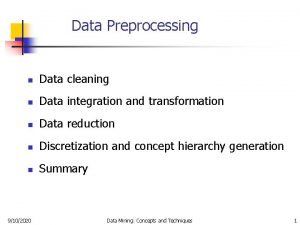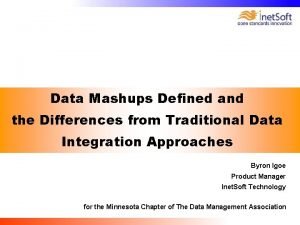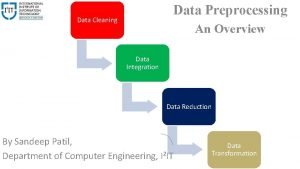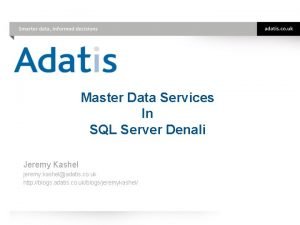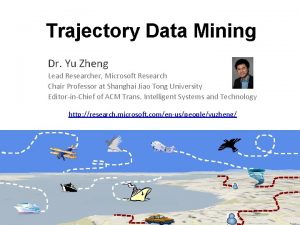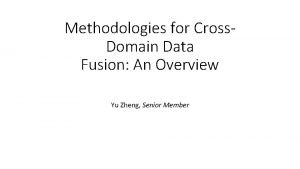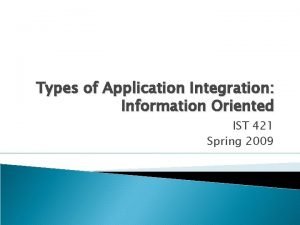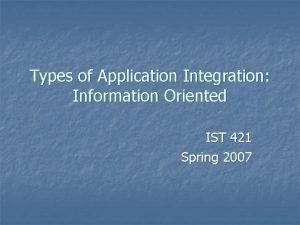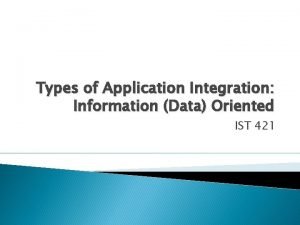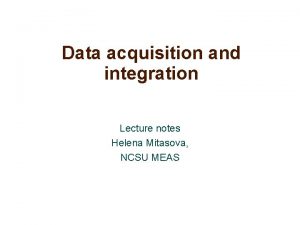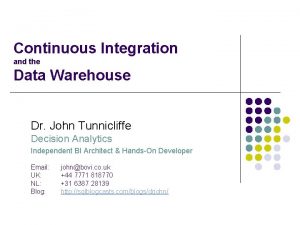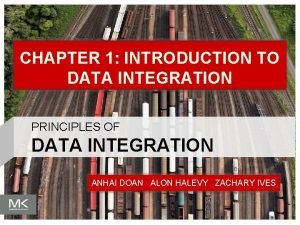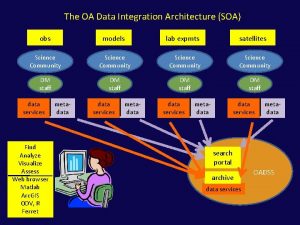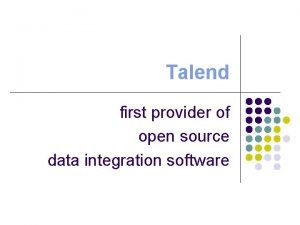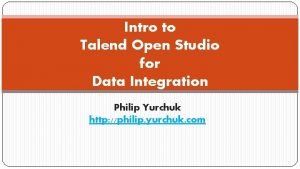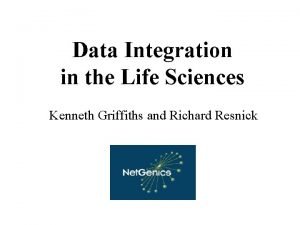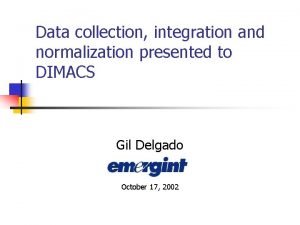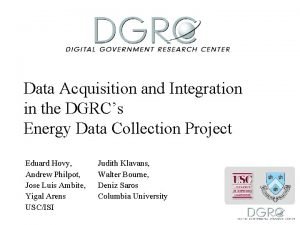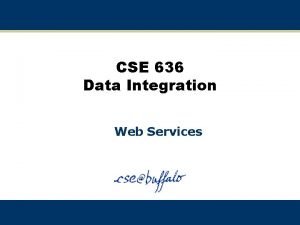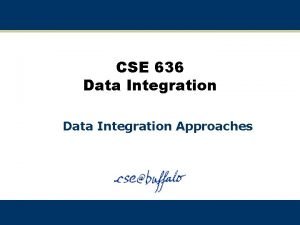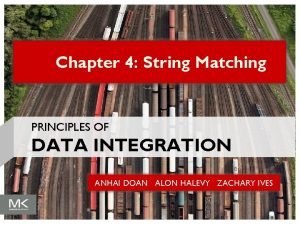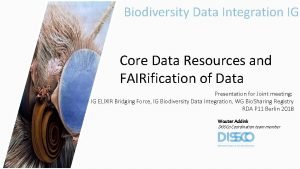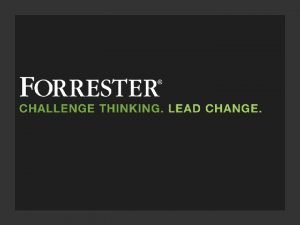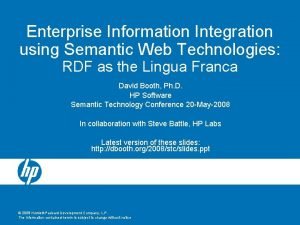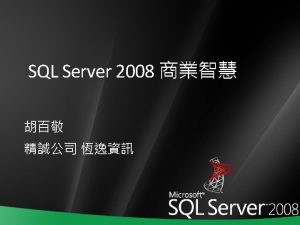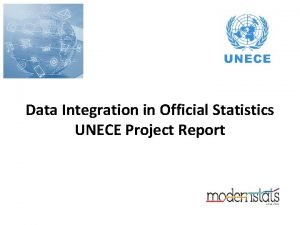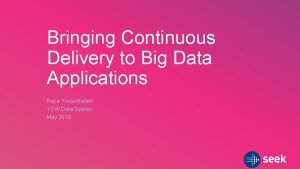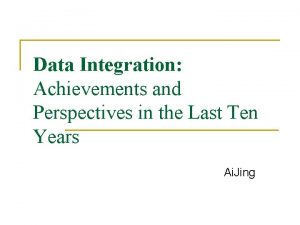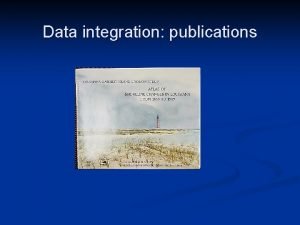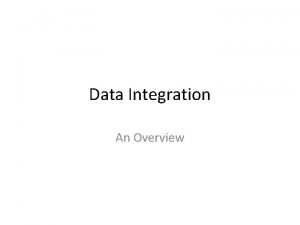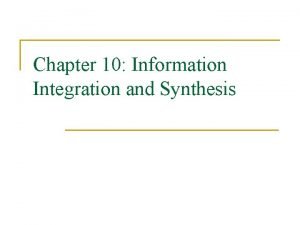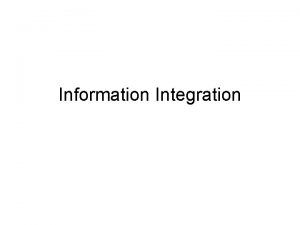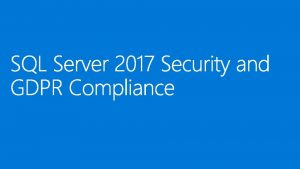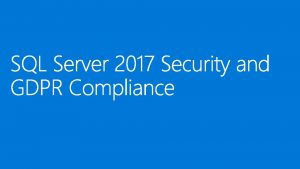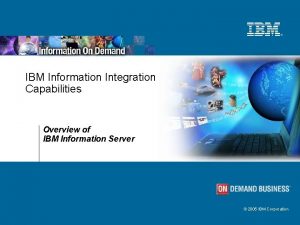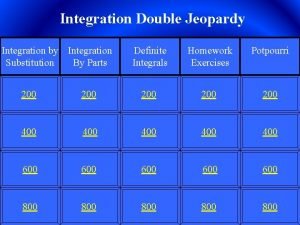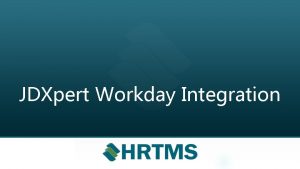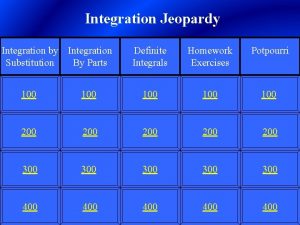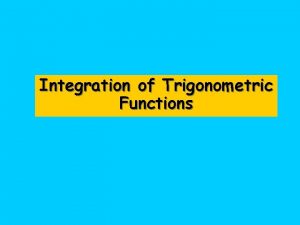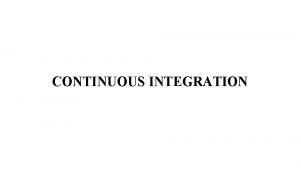Data Integration An Overview What is Information Integration



![[Science 1959] Record linkage: bringing together of two or more separately recorded pieces of [Science 1959] Record linkage: bringing together of two or more separately recorded pieces of](https://slidetodoc.com/presentation_image/26402f87cfc067f9945620b64c440853/image-4.jpg)


![Ted Kennedy's “Airport Adventure” [2004] Washington -- Sen. Edward "Ted" Kennedy said Thursday that Ted Kennedy's “Airport Adventure” [2004] Washington -- Sen. Edward "Ted" Kennedy said Thursday that](https://slidetodoc.com/presentation_image/26402f87cfc067f9945620b64c440853/image-7.jpg)
![Florida Felon List [2000, 2004] The purge of felons from voter rolls has been Florida Felon List [2000, 2004] The purge of felons from voter rolls has been](https://slidetodoc.com/presentation_image/26402f87cfc067f9945620b64c440853/image-8.jpg)


![Chinese Embassy Bombing [1999] • May 7, 1999: NATO bombs the Chinese Embassy in Chinese Embassy Bombing [1999] • May 7, 1999: NATO bombs the Chinese Embassy in](https://slidetodoc.com/presentation_image/26402f87cfc067f9945620b64c440853/image-11.jpg)





























- Slides: 40

Data Integration An Overview

What is Information Integration and Why is it important Some of the upcoming slides are from William Cohen’s tutorial on information integration (Web. DB 2005)

Information Integration To illustrate the problems, we focus here on this aspect Linkage • Discovering information sources (e. g. deep web modeling, schema learning, …) • Gathering data (e. g. , wrapper learning & information extraction, federated search, …) • Cleaning data (e. g. , de-duping and linking records) to form a single [virtual] database Queries • Querying integrated information sources (e. g. queries to views, execution of web-based queries, …) • Data mining & analyzing integrated information (e. g. , collaborative filtering/classification learning using extracted data, …) 3
![Science 1959 Record linkage bringing together of two or more separately recorded pieces of [Science 1959] Record linkage: bringing together of two or more separately recorded pieces of](https://slidetodoc.com/presentation_image/26402f87cfc067f9945620b64c440853/image-4.jpg)
[Science 1959] Record linkage: bringing together of two or more separately recorded pieces of information concerning a particular individual or family (Dunn, 1946; Marshall, 1947). 4

Motivations for Record Linkage c. 1959 Record linkage is motivated by certain problems faced by a small number of scientists doing data analysis for obscure reasons. 5

Information integration in 1959 • Many of the basic principles of modern integration work are recognizable. • Manual engineering of distance features (e. g. , last names as Soundex codes) that are then matched probabilistically. – DB 1 + DB 2 + Pr(matches) + elbow. Grease DB 12 • Applied to records from pairs of datasets – “Smallest possible scale” for integration (one dimension) • Computationally expensive – Relative to ordinary database operations • Narrowly used – Only for scientists in certain narrow areas (e. g. , public health) • How can this process be fully automated? • Why should we care? 6
![Ted Kennedys Airport Adventure 2004 Washington Sen Edward Ted Kennedy said Thursday that Ted Kennedy's “Airport Adventure” [2004] Washington -- Sen. Edward "Ted" Kennedy said Thursday that](https://slidetodoc.com/presentation_image/26402f87cfc067f9945620b64c440853/image-7.jpg)
Ted Kennedy's “Airport Adventure” [2004] Washington -- Sen. Edward "Ted" Kennedy said Thursday that he was stopped and questioned at airports on the East Coast five times in March because his name appeared on the government's secret "no-fly" list…Kennedy was stopped because the name "T. Kennedy" has been used as an alias by someone on the list of terrorist suspects. “…privately they [FAA officials] acknowledged being embarrassed that it took the senator and his staff more than three weeks to get his name removed. ” 7
![Florida Felon List 2000 2004 The purge of felons from voter rolls has been Florida Felon List [2000, 2004] The purge of felons from voter rolls has been](https://slidetodoc.com/presentation_image/26402f87cfc067f9945620b64c440853/image-8.jpg)
Florida Felon List [2000, 2004] The purge of felons from voter rolls has been a thorny issue since the 2000 presidential election. A private company hired to identify ineligible voters before the election produced a list with scores of errors, and elections supervisors used it to remove voters without verifying its accuracy… The glitch in a state that President Bush won by just 537 votes could have been significant — because of the state's sizable Cuban population, Hispanics in Florida have tended to vote Republican… The list had about 28, 000 Democrats and around 9, 500 Republicans… The new list … contained few people identified as Hispanic; of the nearly 48, 000 people on the list created by the Florida Department of Law Enforcement, only 61 were classified as Hispanics. Gov. Bush said the mistake occurred because two databases that were merged to form the disputed list were incompatible. … when voters register in Florida, they can identify themselves as Hispanic. But the potential felons database has no Hispanic category… 8

Information dealing with such matters as violent crime, organized crime, fraud and other white-collar crime may take days to be shared throughout the law enforcement community, according to an FBI official. The new software program was supposed to allow agents to pass along intelligence and criminal information in real time…. In a response contained in the inspector general's report, the FBI pointed to its Investigative Data Warehouse…that provides … access to 47 sources of counterterrorism data, including information from FBI files, other government agencies and open-source news feeds. 9

. . counter asymmetric threats by achieving total information awareness… 10
![Chinese Embassy Bombing 1999 May 7 1999 NATO bombs the Chinese Embassy in Chinese Embassy Bombing [1999] • May 7, 1999: NATO bombs the Chinese Embassy in](https://slidetodoc.com/presentation_image/26402f87cfc067f9945620b64c440853/image-11.jpg)
Chinese Embassy Bombing [1999] • May 7, 1999: NATO bombs the Chinese Embassy in Belgrade with five precision-guided bombs—sent to the wrong address—killing three. “The Chinese embassy was mistaken for the intended target…located just 200 yards from the embassy. Reliance on an outdated map, aerial photos, and the extrapolation of the address of the federal directorate from number patterns on surrounding streets were cited … as causing the tragic error…despite the elaborate system of checks built-into the targeting protocol, the coordinates did not trigger an alarm because three databases used in the process all had the old address. ” [US-China Policy Foundation summary of the investigation] “BEIJING, June 17 –– China today publicly rejected the U. S. explanation … [and] said the U. S. report ‘does not hold water. ’” [Washington Post] “The Chinese embassy was clearly marked on tourist maps that are on sale internationally, including in the English language. … Its address is listed in the Belgrade telephone directory…. For the CIA to have made such an elementary blunder is simply not plausible. ” [World Socialist Web Site] “Many observers believe that the bombing was deliberate…it if you believe that the bombing was an accident, you already believe in the far-fetched” [disinfo. com, July 2002]. 11

Information integration in 2005 • Apparently, we still have work to do. – Why is this problem so hard? – The airport adventure: When can you tell if “T. Kennedy” the same person as “Ted Kennedy? ” When can you accept an answer of “I don’t know”? What sorts of information can you use in deciding: structured data, text, images, … ? – The embassy bombing: When are multiple sources that agree really useful? When have you looked at enough? What are the implications of looking at many sources? – The felon list: If you act on uncertain matches, what kind of errors will you make? will they cancel out, or accumulate? 12

Information integration in 2005 • It is hard to give Definitions: What do we really mean when we say “X is the same as Y”? does every user mean the same thing? • Is “X is the same as Y” transitive? • What conclusions follow from “X is the same as Y”? – Is it true that: Istanbul = Constantinople? – Does it follow that: The capital of Byzantium = Istanbul? 13

When are two entities are the same? 14

Information integration in 2005 • Apparently, we still have work to do. • We fail to integrate information correctly – “Ted Kennedy (senator)”≠ “T. Kennedy (terrorist)” • Crucial decisions are affected by these errors – Who can/can’t vote (felon list) – Where bombs are sent (Chinese embassy) • Storing, linking, and analyzing information is a double-edged sword: – Loss of privacy and “fishing expeditions” 15

Information Integration: today and tomorrow Linkage • Discovering information sources: based on standards and free-text metadata. • Data providers will be even more numerous. • Gathering data: will get cheaper and cheaper • Cleaning data to form a single virtual database will be guided by a user or group of users, and by characteristics of all the data Queries • Querying integrated information sources may be done in radically different query models • Data mining & analyzing integrated information will be the norm, not the exception 16

Mediation Languages Q Goal: Language for Specifying Semantic Relationships (not full FOL) Q’ Source Mediated Schema Q’ Source Q’ Q’ Source Assume: data at the sources is structure (or seems so). Q’ Source

Global-as-View (GAV) Actor(x, y) : - R 1(x, y, z) Actor(x, y) : - R 2(x, z), R 3(z, y) Mediated Schema Title, Actor, … Source R 1 Source R 2 Source R 3 Source R 4 Source R 5

Local-as-View (LAV, GLAV) R 1(x, y, z) : - Title(x, y), Actor(x, z), y< 1970 R 5(x, y, z) : - Movie(x, y, ”French”) Mediated Schema Title, Actor … Source R 1 Source R 2 Source R 3 Source R 4 Source R 5

LAV vs. GAV • What are the advantages of LAV? • What are the advantages of GAV? • How are queries over the entire data being answered in each approach? – GAV – Unfolding (easy) – LAV - Answering queries using views (NP-hard)

Queries in LAV • Suppose that we have the following mapping rules: Acting. Info(title, aname, year) Actor(aname, address) Acting. Info(title, aname, year) Movie(title, year, director) • How does the data look like? • We need to deal with incomplete information! • How can we answer queries? Actor. Info(n, a) Actor(n, a) Titles(t, y) Movie(t, y, d)

Dealing with Incomplete Information • Given an incomplete database D’ (i. e. , there are predicates with null values), we consider all the possible completions D of D’ • Given a query Q over D’, a certain answer A of Q is an answer that is given for any possible completion, i. e. , for any database of D • We consider query answering as the set of all certain answers • How do we deal with negation (e. g. , not exists)?

Maximal Answers • One approach to deal with missing values is be computing maximal answers: – Full disjunction in the relational case – Different semantics of maximal matching in the case of matching graph queries to graph databases – In both cases, computation is intricate

Schema/Ontology Matching Hotel, Restaurant, Adventure. Sports, Historical. Sites Data Source Consumer Mediator Data Source Hotel, Gaststätte Brauerei, Kathedrale Data Source Lodges, Restaurants Beaches, Volcanoes Schema heterogeneity: a key roadblock for information integration – Different data sources speak their own schema – Mapping is key to any data sharing architecture

Schema Matching Books. And. Music Title Author Publisher Item. ID Item. Type Suggested. Price Categories Keywords Inventory Database A Title ISBN Price Discount. Price Edition Authors ISBN First. Name Last. Name Book. Categories ISBN Category CDCategories ASIN Category CDs Album ASIN Price Discount. Price Studio Artists ASIN Artist. Name Group. Name Inventory Database B Schema Matching: Discovering correspondences between similar elements Eventually… Books. And. Music(x: Title, …) = Books(x: Title, …) CDs(x: Album, …)

Typical Approaches • Multiple sources of evidences in the schemas – Schema element names • Books. And. CDs/Categories ~ Book. Categories/Category – Descriptions and documentation • Item. ID: unique identifier for a book or a CD • ISBN: unique identifier for any book – Data types, data instances • Date. Time Integer, • addresses have similar formats In isolation, techniques are incomplete or brittle – Schema structure • All books have similar attributes – Use domain knowledge Combine multiple techniques to exploit all available evidence

XML • In XML the is no strict schema • Integration is easier: you simply take XML from different sources and put them in a single repository • Well, actually the main problem of linking related pieces of information remains! • And, additional new problems emerge (to whom is it good? )

Querying and Searching in XML • Some challenges arise: – How to deal with variations in the structure of the XML? – How to deal with incomplete information? – How to find meaningful relationships among elements? An important example – keyword search.

An example bibliography(1) bib(11) bib(2) 1999 year(3) book (4) article(7) year(12) book(13) article(16) 2000 author(18) title(14) title(17) author(15) John title(5) author(6) author(10) author(9) XML title (8) Database Bob XML Joe Mary Codd C++ Query: What are the titles and years of the publications, of which Mary is an author?

Integration of Geographic Data • The goal: Matching objects that represent the same real-world entity in different maps

The Goal: Matching Objects that Represent the Same Real-World Entity Example: three data sources that provide information about hotels in Tel-Aviv SOI: Survey Of Israel MAPA: commercial corporation MUNI: Municipally of Tel-Aviv 31

The Goal: Matching Objects that Represent the Same Real-World Entity Radison Moria SOI: cadastral and building information MAPA: tourist information polygons MUNI: Municipal information points Hotel Rank Is there a nearby parking lot? Each. A data source provides data the thatdifferent the otherperspectives sources do not join enables us to utilize of provide the data sources 32

The Integration Process First step: overlaying the maps Second step: generating the sets Third step: fusing the objects + 33

Questions about Integration of Geographic Data • How can we integrate efficiently and effectively geographical datasets? • How does the existence of road networks affect the integration? • Can a schema or ontology help us?

Using Locations for Matching Objects • There are no global keys to identify objects that should be joined • Names cannot be used – Change often Global key = common identifier in the different sources – May be missing – May be in different languages • It seems that locations are keys: – Each spatial object contains location attributes – In a “perfect world, ” two objects that represent the same entity have the same location 35

Locations are Inaccurate • In real maps, locations are inaccurate • The map on the left is an overlay of the three data sources about hotels in Tel-Aviv For example, the Basel Hotel has three different locations, in the three data sources 36

Semantic Web “Most of the Web's content today is designed for humans to read, not for computer programs to manipulate meaningfully. ” Berners-Lee, T, Hendler, J & Lassila, O ‘The semantic web’, Scientific American, May 2001

The Semantic Web “For the semantic web to function, computers must have access to structured collections of information and sets of inference rules that they can use to conduct automated reasoning. ” Berners-Lee, T, Hendler, J & Lassila, O ‘The semantic web’, Scientific American, May 2001

The Semantic Web • The main idea: Add semantics and reasoning instead of applying artificial intelligence • Basic standards being developed: XML, XSchema, RDFS, OWL • Is the Semantic Web the holly grail of integration?

Privacy • How can we publish information and yet, guarantee that integration won’t reveal sensitive data?
 Data quality and data cleaning an overview
Data quality and data cleaning an overview Data quality and data cleaning an overview
Data quality and data cleaning an overview Data quality and data cleaning an overview
Data quality and data cleaning an overview Etl in data cleaning and preprocessing stands for
Etl in data cleaning and preprocessing stands for Data mashups and gis are data integration technologies.
Data mashups and gis are data integration technologies. Data mashups and gis are data integration technologies.
Data mashups and gis are data integration technologies. Entity identification problem in data integration
Entity identification problem in data integration Master data services overview
Master data services overview Sql master data services
Sql master data services An overview of data warehousing and olap technology
An overview of data warehousing and olap technology An overview of data warehousing and olap technology
An overview of data warehousing and olap technology Trajectory data mining an overview
Trajectory data mining an overview Methodologies for cross-domain data fusion: an overview
Methodologies for cross-domain data fusion: an overview Forward integration and backward integration
Forward integration and backward integration Vertical diversification example
Vertical diversification example Simultaneous integration and sequential integration
Simultaneous integration and sequential integration Portal-oriented application integration
Portal-oriented application integration Information oriented application integration
Information oriented application integration Types of application integration
Types of application integration Voice data integration
Voice data integration Data acquisition and integration
Data acquisition and integration Data warehouse continuous integration
Data warehouse continuous integration Vertical movie
Vertical movie Soa data integration
Soa data integration Talend integration suite
Talend integration suite Open studio for data integration
Open studio for data integration Data integration in the life sciences
Data integration in the life sciences Data collection integration
Data collection integration Dgrcs
Dgrcs Data integration web services
Data integration web services Virtual data integration architecture
Virtual data integration architecture Site:slidetodoc.com
Site:slidetodoc.com Core data integration
Core data integration Forrester wave data integration
Forrester wave data integration Data integration with xml and semantic web technologies
Data integration with xml and semantic web technologies Data warehouse integration services
Data warehouse integration services Data integration statistics
Data integration statistics Big data continuous integration
Big data continuous integration Numerical integration of discrete data
Numerical integration of discrete data Joint aviation technical data integration
Joint aviation technical data integration Data integration problems approaches and perspectives
Data integration problems approaches and perspectives



